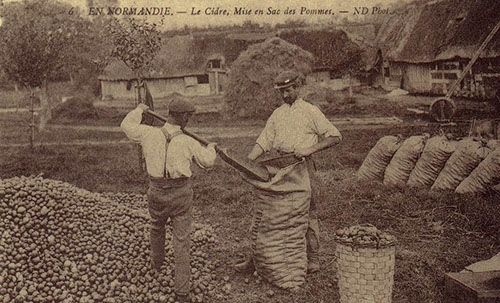
Cider is not a beverage one usually associates with France but traditionally, it is the favoured drink for All Saints’ Day (November 1st) and All Souls’ Day (November 2nd).
Historically, apples were the only fruit still around at this time of year, whether they were the last remaining few on the trees, or those kept in storage. To ensure people got the absolute most from their crops, apples which were unsuitable for storing and eating, due, for example, to being bruised, would be made into cider.
In France, cider is produced using a method called keeving, a practice which has largely been replaced by industrialization in many countries. The ripe apples are pulped and left to stand for 24 hours to macerate so that the pulp can oxidize and release the pectin. The pulp is then pressed into juice, which is left to stand for a week, during which time, natural fermentation begins, raising the pectin gel – or chapeau brun (brown hat) – to the surface, with the sediment settling on the bottom of the container. The partially-fermented apple juice in the middle can then be carefully siphoned off to begin the slow fermentation process in another container, resulting in a wonderfully smooth, and very apple-y cider.
For a taste of la Toussaint mulled cider at home, simply place half a gallon of cider into a large pan, along with the zest of a couple of oranges, a few thin slices of orange, three cinnamon sticks, three cloves, and about half a teaspoon of ground allspice. Warm through for half an hour on a very low heat, and then strain and serve. Even if you don’t observe All Saints’ Day, this is a perfect drink for autumn evenings.
0
Leave a Reply